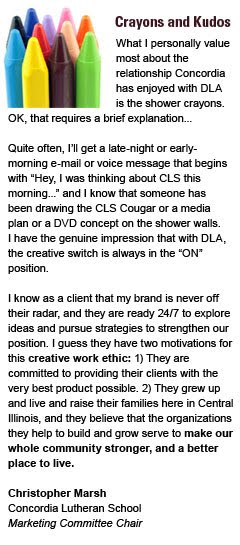Leaders Make the Future – by Bob JohnsonReviewed by Michelle Lefebvre of DLA Creative, Inc.
Like many professionals today, I sometimes find it challenging to get through all of the books I'd like to. One way I'm able to stay on top of the latest business books is with Soundview Executive Book Summaries. One I recently read featured the above-mentioned book by Bob Johnson. Here's a quick summary of the ten skills he references.
First, as an introduction, Mr. Johnson explains that today's leaders need new skills to make a new future. Because we live in this world of VUCA (volatility, uncertainty, complexity and abiguity), the discipline of foresight can help leaders make better decisions today. It can also help them move from a negative VUCA (see above) to a positive VUCA (vision, understanding, clarity and agility).
1) Maker Instinct
According to Mr. Johnson, leaders with Maker Instinct have a constant drive to improve the organization around them. He also explains that while both managers and leaders want to know how things work, true leaders want to make them work better. Makers also like to be hands-on and see things from the inside. In my opinion, Steve Jobs embodies this trait.
2) Clarity
This is the ability to see beyond the stress, mess and chaos when others can't. It's the rare skill of being able to envision the future when others can barely muddle through the current day. It requires strength, discipline and the fortitude to overcome discouragement.
3) Dilemma Flipping
The ability to turn dilemmas (which, unlike problems, cannot be solved) into advantages and opportunities is a critical skill for today's leaders. Dilemma flippers turn hopelessness into hope.
4) Immersive Learning Ability
This is just what it sounds like and is often easier for younger generations for several generations. First, because they've grown up in the digital age and in a world in which they've had to filter out extraneous distractions. Second, as older generations reach higher levels of leadership, they are often insulated from the realities of what's happening "down below".
5) Bio-Empathy
Leaders in today's world must be able to make decisions while understanding and respecting nature and its patterns.
6) Constructive Depolarizing
This is the ability to calm tense situations where differences dominate and communication has broken down. It also includes the skill of bringing people from divergent cultures toward constructive engagement.
7) Quiet Transparency
Leaders must be open and honest, without being self-promotional about it. Quiet Transparency means that leaders will decide what measures are important to them (and to the people they lead) and then be completely open about those measures. Of course, as a matter of confidentiality and appropriateness, leaders still can't share everything.
8) Rapid Prototyping
Leadership through Rapid Prototyping almost goes without saying in this day and age. It's characterized by a trial-and-error mentality with an interest in getting projects started quickly. These leaders know – and accept – that there will be failures in the early stages of development. They emphasize education and in-the-field experience.
9) Smart Mob Organizing
This is the ability to create, engage with and nurture purposeful business or social change networks through the intelligent use of electronic and other media. It's a new world for some executives and although they may want to rely solely on their teams of younger social media experts, wise leaders will at least dabble in social media or request reverse mentoring from young pros in this area.
10) Commons Clearing
Mr. Johnson explains that Commons Clearing is the ability to seed, nurture and grow shared assets that can benefit other players – and sometimes allow competition at a higher level. He tells us that future leaders will be called upon to grow new places within which collaboration and mutual success can occur.
My synopsis of the Ten New Leadership Skills Executive Book Summary is only the tip of the iceberg. If you'd like to learn more about this book or the service itself, check out www.summary.com.




